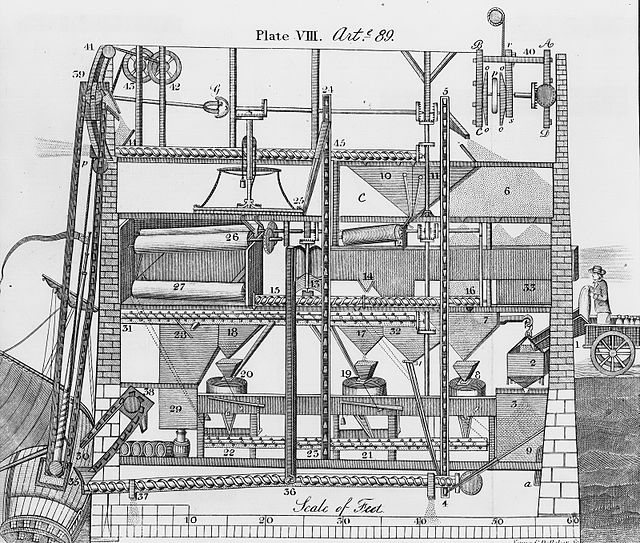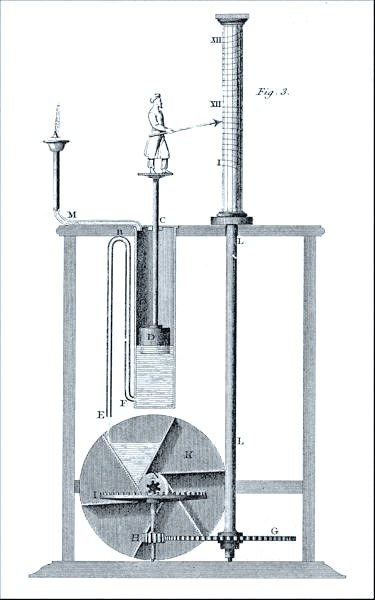Oliver Evans was an American inventor, engineer, and businessman born in rural Delaware and later rooted commercially in Philadelphia. He was one of the first Americans to build steam engines and an advocate of high-pressure steam. A pioneer in the fields of automation, materials handling and steam power, Evans was one of the most prolific and influential inventors in the early years of the United States. He left behind a long series of accomplishments, most notably designing and building the first fully automated industrial process,first propose a design vapor-compression refrigeration, the first high-pressure steam engine, and the first amphibious vehicle and American automobile. More recently, however, in the allocation of priorities for the development of the high-pressure steam engine, the simultaneity of Evans’ work with that of Richard Trevithick has been established, and historians have accorded proper credit for his pioneering of the assembly line.

"Oliver Evans, the Watt of America" Original portrait caption
Evans's design for the automated flour mill, 1790
The Brandywine Village became an influential early adopter of Evans's milling processes.
An artistic reconstruction of Oruktor Amphibolos, 1834
Automation describes a wide range of technologies that reduce human intervention in processes, mainly by predetermining decision criteria, subprocess relationships, and related actions, as well as embodying those predeterminations in machines. Automation has been achieved by various means including mechanical, hydraulic, pneumatic, electrical, electronic devices, and computers, usually in combination. Complicated systems, such as modern factories, airplanes, and ships typically use combinations of all of these techniques. The benefit of automation includes labor savings, reducing waste, savings in electricity costs, savings in material costs, and improvements to quality, accuracy, and precision.
Minimum human intervention is required to control many large facilities, such as this electrical generating station.
Ctesibius's clepsydra (3rd century BC)
Steam engines promoted automation through the need to control engine speed and power.
A flyball governor is an early example of a feedback control system. An increase in speed would make the counterweights move outward, sliding a linkage that tended to close the valve supplying steam, and so slowing the engine.








